Calculation of currents of short circuit is one of main tasks of energy. The ne-cessity of determination of currents of KZ can arise up in the process of exploitation:
•at the change of chart of feed of Energy facilities for verification of electrical equipment on the thermal and electrodynamic action of currents of KZfitness of the existent relay protection, facilities of lightning guard et cetera
• at partial replacement of electrical equipment on powerstation or substations , if the machines to install different from those that are dismantled;
• due to changes in operating conditions of the electric object.
•at creation of new energy object. [1]
Calculated schemes of electric power stations of high power and electricity supply systems of industrial enterprises can arrive at significant size and to have a complex topology. So, for example, scheme of direct-current of one power units by power 800 MVt has 105 knots and 130 branches, has radial, circular areas.
In the most perspective domestic firms which are engaged in planning and building of energy objects for the calculations of currents of KZ the used programs of calculation are on PEVM. But such programs have a high cost.
In educational institutions, industrial calculation program, as a rule, can not be used because of their high cost. On the other hand they have a closed structure and can not be effectively used in the learning process.
Qualifying work of the master performed during 2009-2010. in accordance with scientific direction of department the «Electric stations» of the Donetsk national technical university.
• The work purpose
In connection with the reconstruction of equipment on the electric stations appears necessity of permanent calculation short circuit currents. In a number of cases calculation schemes are difficult enough and there is a necessity of automation of process of calculation for them currents of KZ. The purpose of work is perfection the software department "Electrical stations" associated with the calculation of short circuit currents.
Calculation of currents of KZ for the schemes of electric connections with dif-ferent classes of tension(to and higher 1 kV) on variable and on a direct current on a single computer technology with the use of matrix methods of nodal poten-tials
Modernization of methods and algorithms of the programs of calculation short circuit currents of KZ with the purpose of increase of their functional possibilities and reliability of calculations.
Subject matter are the software products having the opened algorithm, whose implementation is made in the automation package MathCad mathematical calculations
Methods and algorithms of calculating short circuit currents in electrical schemes alternating and permanent current.
In this work is used the followings methods:
a. methods of matrix analysis;
b. the method of nodal potentials in the classical kind and using the matrix of nodal resistances.
Scientific novelty in this work - development of a universal algorithm for calculating a variety of electrical circuits, as well as the use of symbols in the node numbering schemes for the electrical connections to increase the reliability of calculations short circuit currents.
Developed programs of calculation of currents of KZ will be used in kursovom and diploma projects of student’s direction "Electrical Engineering and Technology"
Report on the theme of "Automation of calculations of short circuit currents in electric settings AC and DC," presented at the conference to the "Science Day-2010" DonNTU Department of Electrical stations.Donetsk, DonNTU-2010.
Also was done a report on the Odessa Internet conference in 2010.
• At the local level (to Donetsk)
The program "Astra"
Program "Astra" was developed at the Department of Electric Power Stations "Antonenko Georgi Vladimirovich in 1991. Intended for
1 calculating short circuit currents;
2 calculation of modes of motor load:
• automatic starting of pumping jacks
• launches
• group launches.
"Astra" is used in the design institute "YuzhNIIgiprogaz" since 1991.
National University "Lviv Polytechnic", Dept. ECM
Interactive Automated complex DAKAR-2002 - a NEW LEVEL of INFOR-MATIVE PROVIDING of the electroenergy systems
"Скрипник А.И., Коновал В.С., 2008
"Skripnik AI, Konoval VS, 2008
Interactive automated complex DAKAR-2002 was developed based on the Win-dows NT operating system and is designed to calculate and analyze the steady-state regimes and transients of electric power systems. The structure of the complex information is information database and software work with it.
Variety of calculation tasks which solves the dynamic model of the EEC, creates certain difficulties in forming the structure of data. All information is given and stored as parameters of physical equipment. To implement specific types of calculations necessary to create a scheme of calculation used by the respective modeled modules.
In the vast majority of the regime calculations are carried out on electric power systems with a fairly permanent structure, and almost the same list of basic equipment. Most operations are performed to change some parameters of the equipment, switching, changing the coefficients of transformation of transformers, regulators setpoints, etc. Given this, all basic information is divided into a constant topology and variable (operational). Separately chosen information at an ancillaries equipment (parameters of different regulators, automation, parameters of lines with a crown etc.), used the separate calculation modules comparatively rarely.
The basis of the concept of data model lie two data description:
• it is physical definition of data - determines how information is organized in databases from point of programmer,that is, as formed and operate various tables of models of data;
• it is definition of data of user - sets, as information appear an user for processing.
At the physical level, all data is organized in the form of two-dimensional tables.
Every object, formed plenty of elements with identical attributes, determines an own tables.
Such principles are fixed in basis of construction of model of data:
• any object, except for information, saves methods and properties of their treatments. Initial data for models for forming are the parameters of the physical equipment;
• all objects (tables) in a certain way are identified and accessible from any program
• lack of redundancy or dual-input single information. Replacement of any data should be carried out only in one place
• to facilitate the work with data, they are divided into operational, topological, equipment and reference books.
Software allows to decide the followings tasks:
• creation of graphic chart of network and interconnect schemes of substations with to display on them the results of calculation; ;
• calculation and analysis of steady regimes;
• study of static and dynamic stability;
• analysis of long-term transients;
• analysis of asymmetric, incomplete-modes and calculation of short circuit currents.
To provide for interaction with other complex computational program provides import and export information about the scheme and an established regime in the most common data formats, in particular, of the Centre in CDA format and the format of UCTE DEF.
Asymmetric and incomplete-modes are modeled are on the method of symmetrical coordinates. Implemented multiple asymmetry of three types: transverse asymmetry and the longitudinal asymmetry (nepovnofaznist) and asymmetry (nepovnofaznist) Shunt reactors.
Maintaining the balance. During ekvivalentuvannya maintain a balance of active power regime scheme. Added the equivalent branches between the nodes landfall. Conclusions:
1. Today the software package DAKAR-2002 is a powerful complex of Ukraine to solve many problems of research and analysis of various processes and modes of operation of modern power systems.
2. Offered in Dakar-2002 concept of data model has allowed to rise to and new level of information support of electric power in Ukraine. [4] .
The programmatic complex ENERGYCS for designing power systems Ivanovo State Power University
The model, which is used to calculate the short circuit current, satisfies the most stringent requirements for the calculations to select the settings of relay protection. Currents of branches are brought to its nominal voltage. This takes into account the exact values of the coefficients of transformation of transformers and change in resistances of transformers winding when switching branches RPN and MSDSCalculation of the nodal voltages of a short circuit is produced by the method of Gauss, on tensions of knots are calculated currents in branches. For a calculation the emf at the initial moment of short circuit for the system, for generators, for synchronous and asynchronous motors are used in the program voltage in the steady state preceding the emergence of a short circuit, - the results of the calculation of the steady mode, taking into account of voltage regulators and the mode of active and reactive power. Actually, a complete calculation of the steady mode is produced for every calculation of currents of short circuit. The module of ENERGYCS TKZ is unconnected with the module of ENERGYCS UR and can be used quite independently. To obtain comparable results can turn on the program, in which the emf is calculated at nominal parameters - the results are consistent with obtained by other means (eg, manually or using other programs). However thus possible to get the overpriced or understated values of currents of short circuit. For today a programmatic complex ENERGYCS allows to decide the followings tasks within the framework of calculations of currents of short circuit:
• a calculation of initial values of currents of three-phase short circuits is in difficultly reserved networks;
• calculation of initial values of currents of single-phase to earth short circuit;
• calculation of initial values of currents of diphasic on earth short circuits;
• calculation of initial values of currents of diphasic without earth short circuits;
• calculation of currents in the cables of lines at short circuits on earth and estimation of their thermal firmness;
• calculation of capacitive currents of single-phase earth fault in networks with isolated neutral;
• calculation of shock of short circuit currents at three-phase the short circuit in accordance with GOST 27514-87 [4];
• calculation of values periodic and aperiodic constituents of current of KZ at a given time;
• calculation of virtual value of current of three-phase KZ in the moment of disconnecting;
• calculation of integral of Joule in the moment of disconnecting, and also thermally equivalent and equivalent onesecond currents of short circuit;
• construction of vector diagrams of currents and voltages for arbitrary nodes and arbitrary branches network.
The program allows for a given point of the short circuit to consider the distribution of currents and voltages in all branches of the circuit, bring in the tables or on the schemes values of the maximum values of short circuit currents the phases, the currents in all phases of currents on symmetrical components, as well as to construct a vector diagram of currents for the chosen branch and vector diagram of voltages for the selected node.
During the calculation of asymmetrical short circuit at a given point the chart of a zero sequence is formed automatically. Forming of scheme is carried out on is based
• topological structure of a design scheme;
• information about the scheme groups connections the windings of the transformer and its mode of neutral;
• information about mutual influence of VL, passing in general corridors taking into account geometry of pendant of wires on support;
• information on the availability and method of grounding, grozozaschitnykh wire.
The results of calculations can be shown out directly on a chart or in tables. Final documents can be formed with the use of MS Word on the basis of the beforehand provided templates.
The program provides several options for presenting the results of the calculation of TDF(токов кз)
The first version determines the node, in which should consider the possibility of short circuit. get as a result, currents is a short-circuit currents in the site for three-phase, two-phase, one-and two-phase short circuit on the ground, and the importance of surge current and constant decay time of the free component. For every type of KZ distributing of currents is determined in all branches, and for all knots are remaining tensions (Fig 7.1).
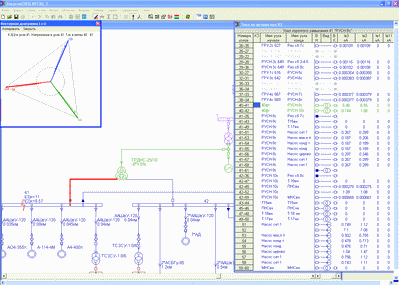
Figure 7.1 –The results of the calculation of current distribution (TDF) for a short circuit at one point
In the second variant the program executes the calculations of TKZ for the great number of the indicated a nodal points of the scheme. In this case on a scheme can be shown out only values of currents in the selected knots, and in a table are currents in all selected knots and joinings to them branches. Except for the initial values of currents of KZ for all types of damages, in the table displays the regime parameters for the evaluation of the thermal and dynamic actions of the three-phase short circuit currents, ie for each branch adjacent to the node to the CP displays the results of the calculation of surge current, the Joule integral, thermally equivalent and equivalent odnosecond currents ( Fig 7.2).
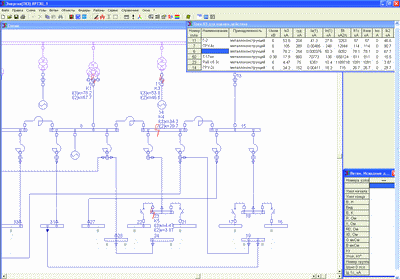
Figure 7.2 - The results of the calculation of TDF during a short circuit at several points
For the calculations of currents of KZ with the purpose of determination of setpoints of relay protection a foreseen the calculation of currents,flowing through a given branch of a short circuit in a given set of nodes. The example of table is resulted on a fig 7.3.

Figure 7.3 - Short-circuit currents in the control branch
The calculations of currents of earth-fault for networks with isolated neutral are produced a topological method in the same module and can be shown out on a chart or in tables along with the results of calculations of TKZ.
The example of calculation of TKZ for the system of own needs of thermal elektrostan-cii is rotined on a fig 7.4.
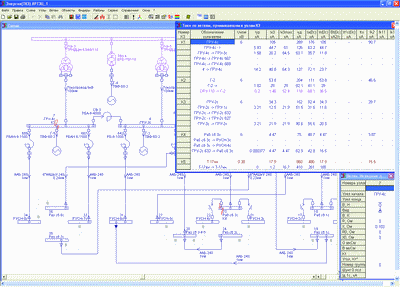
Figure 7.4 - Example of calculation of TDF for the system's own needs
[3]
At power plants and large power systems, power industry design schemes can achieve significant size and have a complex topology. Figure 8.1 shows the electrical circuit supplying one of the mines of Donbass.
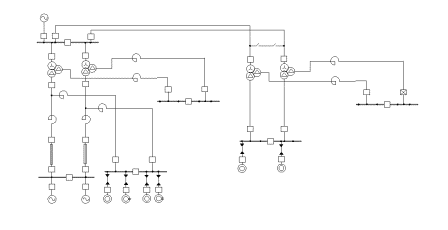
Figure 8.1 - Diagram of power supply one of the mines of Donbass
Figure 8.2 shows a simplified equivalent circuit.
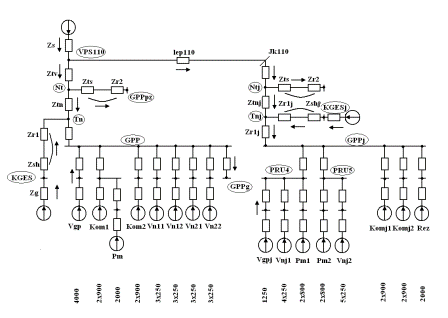
Figure 8.2 - Topologically equivalent circuit of a power supply circuit of one of the mines of Donbass
In this work considered software products with the opened construction of algorithms realization of which is executed in the package of automation of mathematical calculations of Mathcad.
As with the a manual calculation of short circuit currents at the first stage of works is formed calculation electric chart and the corresponding equivalent circuit of substitution. For the her elements from of the reference books or other sources take the required input data.
The equivalent circuit of substitution numbered at a small scheme, or symbolic identification of nodes. Are marked and the directions of currents in the branches
In the program of calculation of currents of KZ a calculation chart appears the entrance matrix of description of branches V. In this matrix has an amount of lines equal to the number of branches of a design scheme, and a few columnsIn the first and second from them disposes- numbers or denotations of knots from which the current of branch goes out and in which this current is included. Resistances of branches are disposed in a next column. If necessary (in the case of different sizes) early as one column disposed E.M.F. branches. So, for example, in the schemes of main electric connections of power-stations size E.M.F generators can be about 1.2, and E.M.F. electric motors - 0.9.
The algorithms of the programs of calculation short circuit currents are built on the method of nodal tensions in the matrix form of record
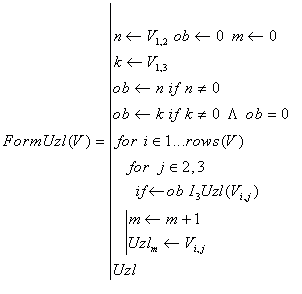
Figure 8.3 - The function FormUzl to create a vector Uzl
(Animation: volume - 5.2 KB; size - 302h294; number of frames - 8; zaderdka between shots - 500 ms delay between the last and first frames - 500 ms, the number of cycles of repetition - 5)
At the calculation of scheme with a few degrees of voltage in As the input is formed the matrix of description of knots of Ub is formed, in which to on disposed columns: denotation of knot, sizes of middle base tensions, own tvv and complete tpv terms of disconnecting of switches and calculation term of action of relay defence of trz.
Under GOST 27514-87. Short circuits in electrical installations. [5] Calculations of the total values of periodic components of short circuit currents can be obtained using the input resistance of the scheme relative to the corresponding point of BB. Such resistance can be obtained by inverting the matrix of nodal conductivitie
 |
(8.7) |
They are in the corresponding diagonal a elements of matrix of Zu. The current short-circuit in the i node
 |
(8.8) |
where C=1-1.1 - equivalent emf calculation scheme, Iб- base current, Uб - base voltage.
The magnitude of Zu can also be found according to [4] the time constant at each node of a design scheme as
 |
(8.9) |
where w0=314.15 - synchronous angular frequency network
< |
(8.10) |
Shock instantaneous values of current of KZ.
 |
(8.11) |
Thermal impulse of current of KZ.
 |
(8.12) |
In those cases, when necessary to know spreading of currents of KZ in branches scheme, or when size E.M.F. sources considerably differ between itself the calculation of currents of KZ in the separate knot of Nk is executed in the following sequence: in the knot of KZ is entered the shunt of KZ with the large value of conductivities, for example

 |
(8.13) |
Then there are the voltage at the nodes of (1) and short-circuit currents of branches, as
 |
(8.14) |
where Uv - - stress vector branches.
The total a value of the periodic component can be obtained as
 |
(8.15) |
Calculation of asymmetrical KZ in obedience to a rule Shchedrin the point of KZ de bene esse a removed at the value of shunt of KZ and after him symmetric KZ is examined. The magnitude of the shunt is determined by the resultant resistance of the circuit feedback and zero sequence.To find these resistances are formed matrix describing the branches of these schemes V2 and V0. Then, it formed the matrix of nodal conductances and resistances , as shown above for the direct sequence schemes. In the corresponding diagonal elements of these matrices are the resultant resistance of the circuit with respect to the relevant sites. Asymmetrical short-circuit current in the i-node is determined on the following expression.
 |
(8.16) |
where m - - conversion factor between the current direct sequencing and by the current of KZ especially phases
Calculation of short circuit currents in electrical installations AC voltage less than 1 square. Feature of these calculations is
• a accounting the active resistance of all elements of the scheme;
• a accounting the resistance of the electric arc;
• execution of calculations in the units named;
• binding calculation of three-phase and single-phase short circuit
• account the additional resistance of the circuit elements: current transformers, contact connections, spools releasers and other.
In general, the algorithm is not significantly different from that described above [5].
As a result of implementation of this work can be done the followings basic conclusions:
On the basis of the developed methods of machine calculation of currents of KZ the program of calculation is modernized on PEVM in the environment of mathematical package of Mathcad, which has the followings advantages before analogues:
it is possibility of calculations of symmetric and asymmetrical currents of KZ;
it is introduction of index numeration of branches.
The executed comparisons of calculations of currents of KZ on the developed program with the best world analogues gave positive results.
On this program there were the executed calculations of currents of KZ for some power-stations of the Donetsk region.
The program is inculcated in the educational process of department of ES at implementation of the course and diploma planning.
1. Беляева Е.Н. Как рассчитать ток короткого замыкания. Библиотека электромонтера. М.: Энергоатомиздат, 1983
2. Скрипник О.І., Коновал В.С. Діалоговий автоматизований комплекс дакар-2002 – новий рівень інформаційного забезпечення електроенергетичних систем.: Журнал «Вісник» Національного університету "Львівська політехніка" № 460 2002 року
http://www.nbuv.gov.ua/portal/natural/VNULP/Elektroenerg/2008_615/
3. Николай Ильичев, Вячеслав Серов, Анатолий Кулешов, Ольга Михалева Программный комплекс EnergyCS для проектирования электроэнергетических систем.: CADmaster #36/1.2007 (январь-март) // Электротехника)
4. ГОСТ 27514-87. Короткое замыкание в електроустановках. Методы расчета в электроустановках переменного тока напряжением свыше 1кВ- М:.Издательство стандартов, 1988
5. Крючков И.П., Неклепаев Б.Н., Старшинов В.А. Расчет коротких замыканий и выбор электрооборудования. М.: Академия, 2006.
6. Небрат И. Л. Расчеты токов короткого замыкания в сетях 0,4 кВ: Учебное пособие. - Петербургского энергетического института повышения квалификации руководящих работников и специалистов. Минэнерго РФ. 2001.
7. Голубев М.Л. Расчет токов короткого замыкания в электросетях 0,4-35кВ. - 2-е издание переработанное и дополненное. - М.: Энергия, 1980.
8. Мельников Н. А. Матричный метод анализа электрических цепей. Изд. 2-е, перераб. и доп., М., "Энергия", 1972.
9. Беляева Е.Н. Как рассчитать ток короткого замыкания. 2-е изд., перераб.и доп. Издательство: М.: «Энергоатомиздат»Год издания: 1983
10. ПУБЛИЧНАЯ БИБЛИОТЕКА>
http://publ.lib.ru/ARCHIVES/B/''Biblioteka_elektromontera''/
When writing this abstract the master’s qualification work is not completed. Date of final completion of work: December. 1, 2010 Full text of the work and materials on a work theme can be received from the author or his scientific supervisor after the date.

